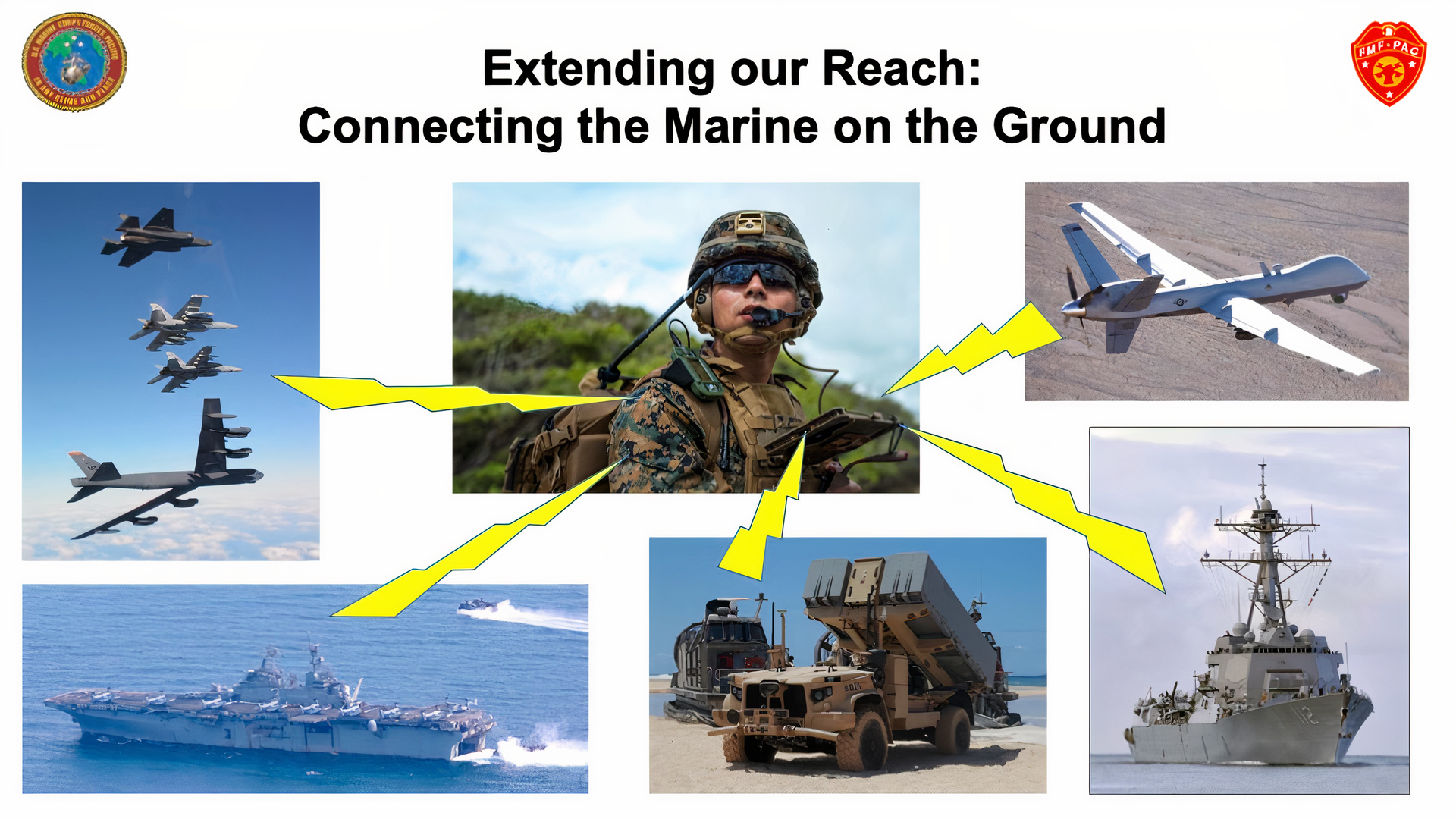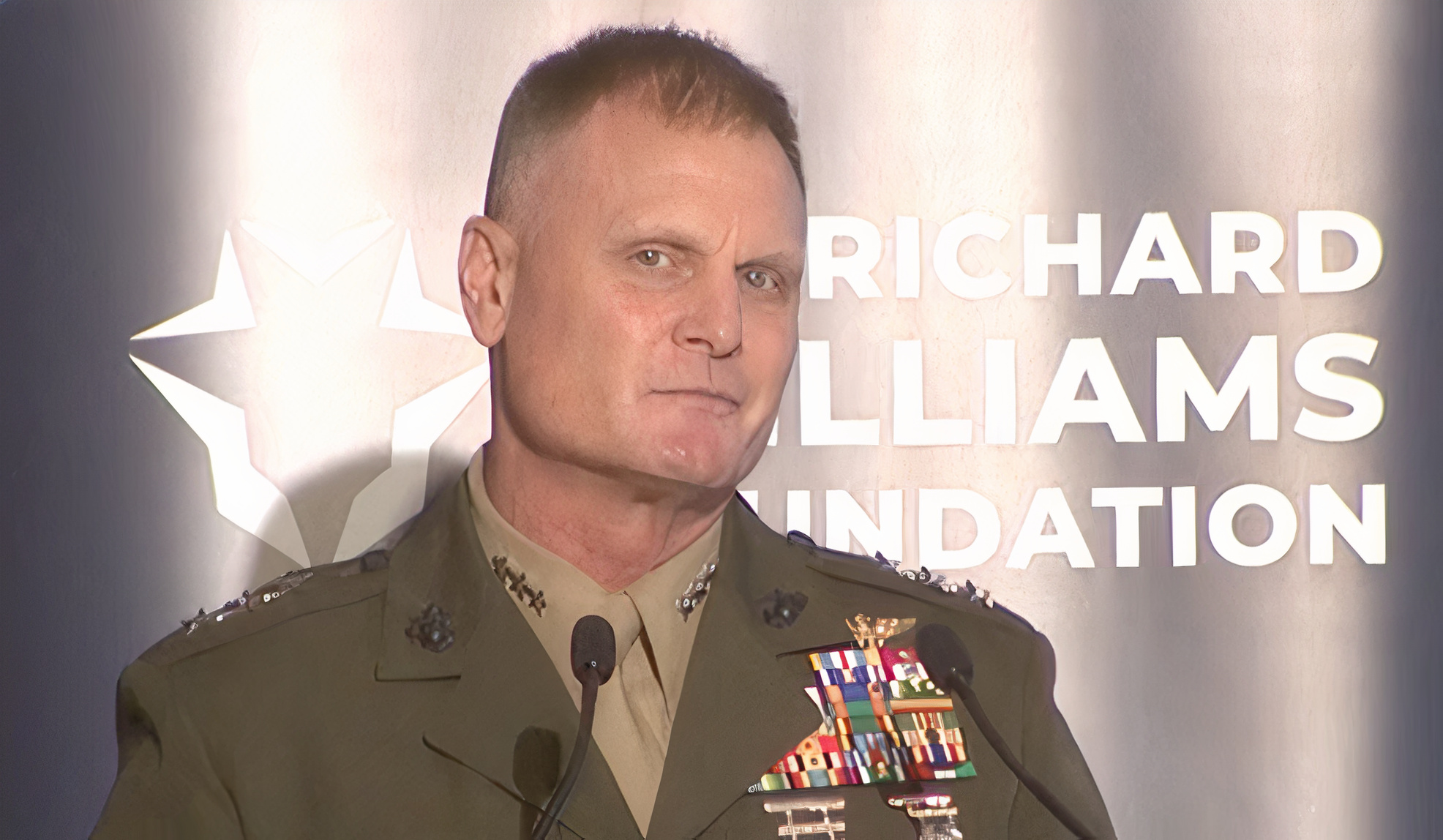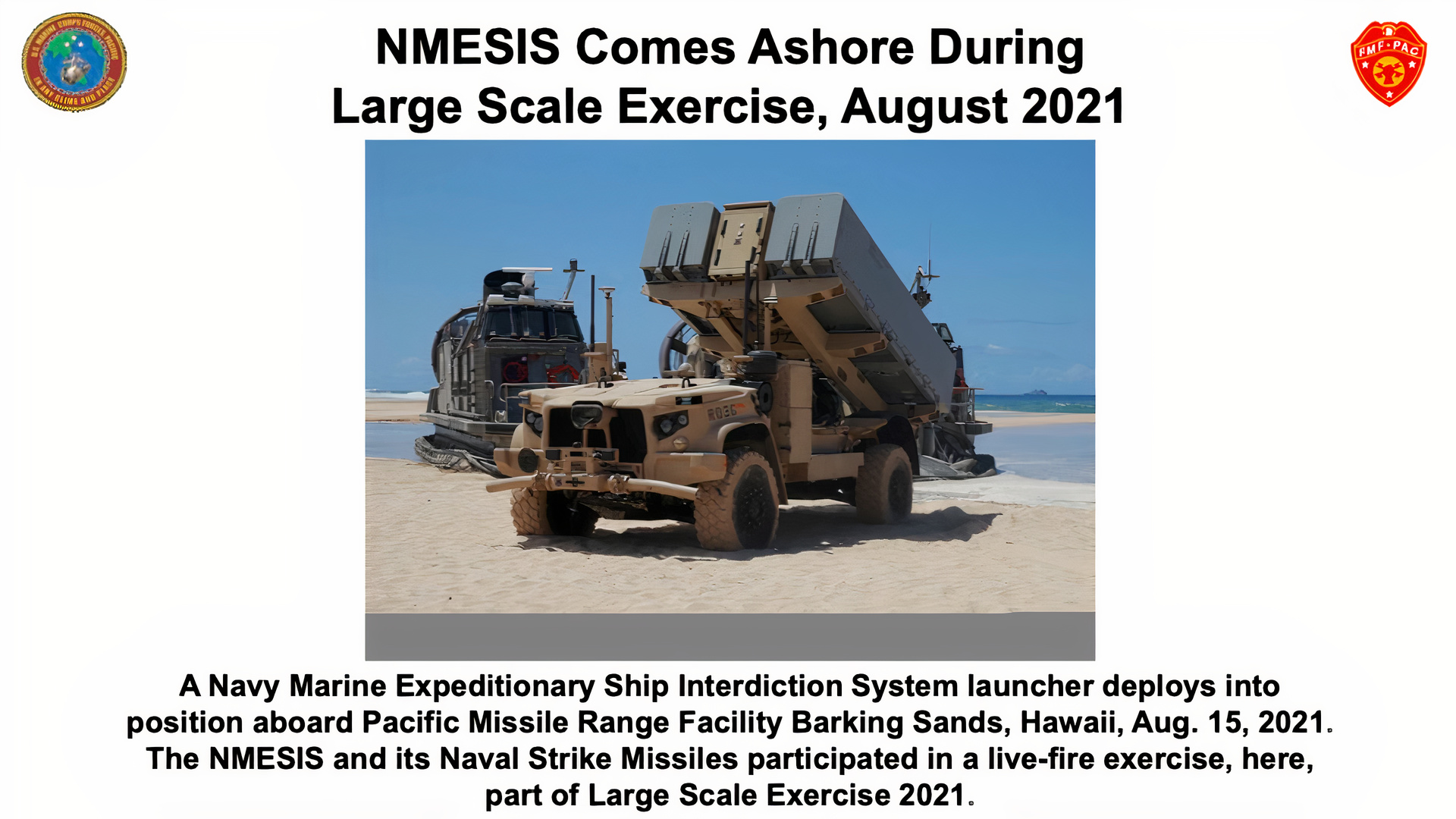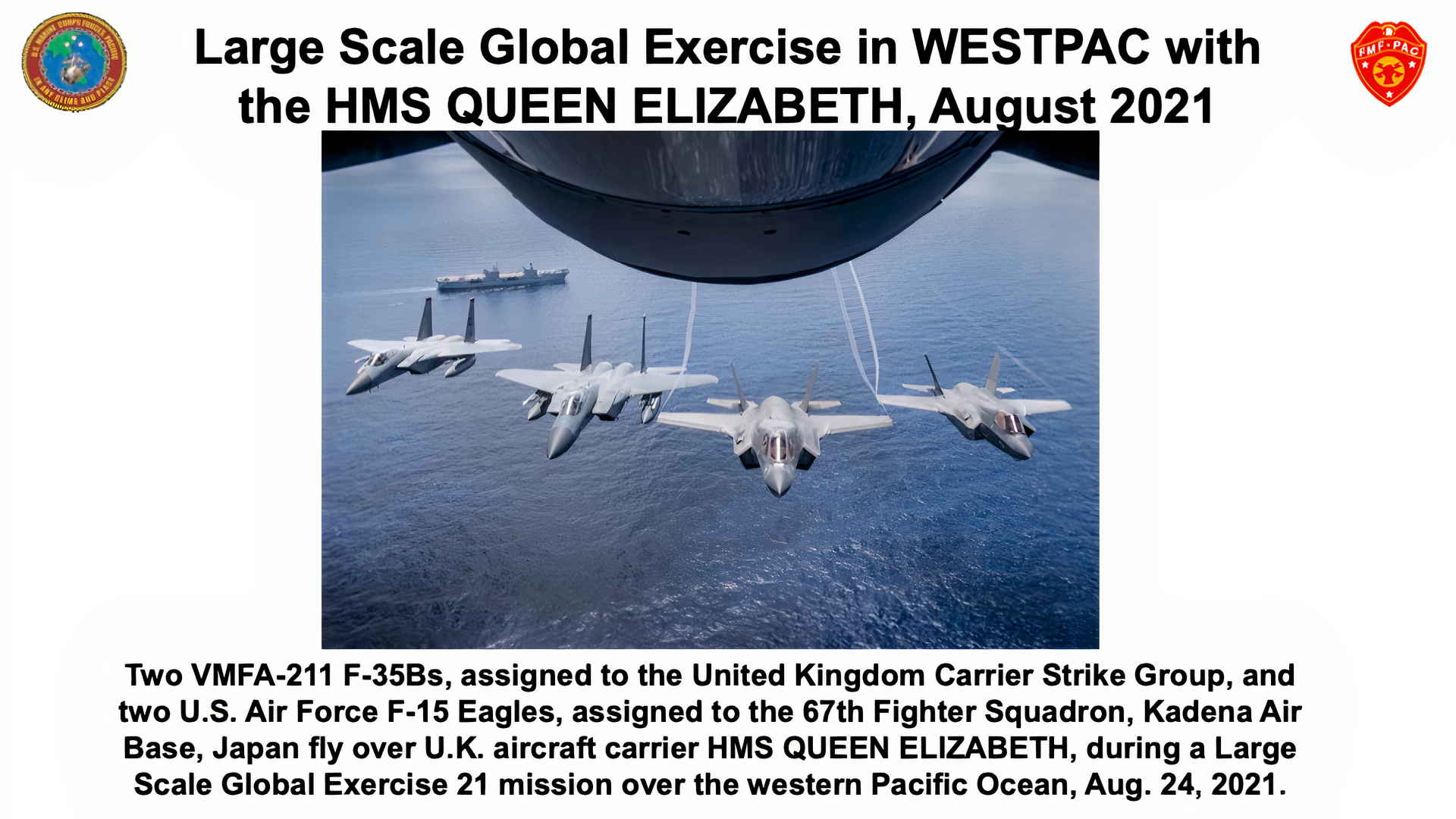Shaping a Way Ahead for the Networked Integrated Force: The Perspective of MARFORPAC
LtGen Steven Rudder, Commander, U.S. Marine Corps Forces, Pacific and Commanding General Fleet Marine Force, provided a USMC perspective on the way ahead for the networked and integrated force which highlighted the impact of the F-35 on the USMC role in Pacific operations.
He noted the Marines are operating both the F-35Bs and F-35Cs in the Pacific. By having an ability to operate both from the sea and from land, the two F-35s provided a significant fifth generation warfighting capability which can enable the Marine Corps focus on expeditionary operations. As he put it: “we’ll continue to operate our F-35C from the carrier with our agreement with the Navy, but also when they’re not on the carrier, we’re operating them off land bases as well to give us the operational flexibility we want to achieve.”
With the operation by allies in the Pacific, the Marines are able to bring their operating experience to Asian allies soon to operate the aircraft, notably the Singapore Air Force and the Japanese as well. He provided a slide in his presentation which highlighted the combined training which occurred with the Singapore Air Force last year as well as a slide which highlighted joint operations with Japanese Self Defense Forces during last year’s Talisman Sabre exercise.
LtGen Rudder understandably underscored as well the integrated operations which the USS America operating USMC F-35Bs with HMS Queen Elizabeth operating UK F-35Bs and the ability of the Marines to cross-deck between the ships.
He noted: “Our aviation communities can plug and play in coalition operations and this is key element of moving ahead with a networked integrated force.”
For the Marines, airpower integration is crucial, but it is the ability to integrate from the sea to land operations which is critical as well. As Rudder put it: “we have been working on the ability to take F-35 data and to use that data for target acquisition and get such data down to our ground force.”

One initiative being pursued is the deployment of ground fires, such as the Naval strike missiles, in support of naval sea control and sea denial operations, which is leveraging such a data transfer. He noted that the Marines have over the last year have been working on such an approach to force integration.
Indeed, a key way ahead for the Pacific-based Marines is to be able to support the U.S. Navy’s Sea control and sea denial operations. This is another aspect being worked with regard to enhancing the ability of the Marines and Navy to deliver an enhanced network integrated force.

In my own view, the intersection between the U.S. Navy’s evolving approach to distributed maritime operations and the USMC’s approach to mobile and expeditionary basing are inextricably intertwined, a subject which I address with my co-author in our forthcoming book, A Maritime Kill Web Force in the Making: Warfighting and Deterrence in the 21st Century.
The Marines have also created a Marine Littoral Regiment designed to provide a new way for the infantry to operate in the Pacific. And such a force clearly needs support from airpower organic to the USMC or from the joint force.
To move further down the road of a networked integrated force, Rudder underscored that “we are buying mesh networks that are able to take wave forms from space, surface, or air, and translate them into to a common operating picture for our ground forces. We are focused on enhanced shared awareness in order to be able to hold targets at risk. We need to address the threats we face in an integrated fashion.”
In the interview I did this past summer at his office in Honolulu with LtGen Rudder, he highlighted how he saw the way ahead for the USMC with regard to working with allies and with the joint force.
“We are focused on shaping an effective posture that combines forward bases with rotational partnerships with key Allies. I have already highlighted how important our posture is in Japan. Employing Infantry and MV-22s from Okinawa and F-35s from Iwakuni (in southwest Honshu) we readily integrate with Japans Amphibious Rapid Deployment Brigade.”
“MRF-D plays a role as well. Six months out of the year, we rotate 2,000 Marines into Australia with ground forces, MV-22s, fires, and logistics capability. Now that the Australians are operating the F-35 and routinely exercising amphibious operations, we can work jointly on expanding high-end bi-lateral and multi-lateral operations. As a combined force, we have already increased the complexity of operations as recently demonstrated during Talisman Saber 21.”
“And as we build up and deploy greater numbers of forces to Camp Blaz, Guam, we will use this location as an additional posture location for 5,000 Marines and Sailors. All of these posture developments allow us to have various operational touch points from which one could aggregate force capabilities. With a combination of air and sea lift, we are designing a force with the ability to rapidly move into positions of advantage.”
We then discussed the evolution of fires which the Marines can bring to the Pacific fight. With the end of the INF (Intermediate-Range Nuclear Forces) treaty, the United States can now build longer range conventional capabilities. The Marines are looking to participate in this effort, and employ them from expeditionary forward bases well inside the adversary’s weapons engagement area. The objective is to contribute to SLOC defense or be additive to offensive naval fires.

According to Lt. Gen. Rudder: “If we look forward in the not-too-distant future, we’ll have the ability to have land-based long-range fires, aviation fires, and persistent high endurance ISR (Intelligence, Surveillance and Reconnaissance) with the MQ-9. We’ll be able to move those capabilities with KC-130s, MV-22s, or amphibious lift allowing us to project long-range fires forward anywhere in Asia, much like we do with the HIMARS (High-Mobility Artillery Rocket System) today.”
“HIMARS fits in the back of a KC-130 allowing rapid mobilization and insertion. We will exercise the same operational tactic with anti-ship capability. We want to project sea denial capabilities to cut off a strait of our choosing or maneuver into positions to create our own maritime chokepoint.
“As we saw with hunting mobile missiles in the past, having long-range fires on maneuvering platforms makes them really hard to hit. As we distribute our long-range fires on mobile platforms, we now become a hard platform to find. Our desire is to create our own anti-access and area denial capability.
“For the last several years, we were thinking about the adversary’s missiles, and how they could be used to deny us access to forward locations. Now we want to be the sea denial force that is pointed in the other direction. Land based fires are perfectly suited to support naval maneuver.”
“We want rapidly to move by air or sea, deliver sea denial capabilities onto land, maneuver to position of advantage, deliver fires, maneuver for another shot, or egress by air or sea. We are training current forces on concepts for sea denial missions supported by maneuver of long-range fires. This is a key element of the naval integration.”
With a growing capability of joint sensor networks, the potential for more effective joint targeting is a reality. As the joint force focuses on dynamic targeting, services are closely coordinating fires networks and authorities. The advantage of land based expeditionary fires is that they provide persistence cover within an established air and surface targeting solution.
This is how Lt. Gen. Rudder characterized how he saw the way ahead. “We are completely integrated with naval maneuver and working hand and hand with the joint force. I MEF and III MEF have been operating seamlessly as three-star naval task forces astride Seventh and Third Fleets.
“During crises, I become the deputy JFMCC (Joint Force Maritime Component Commander) to the Pacific Fleet Commander. The MARFORPAC staff integrates with the PacFleet staff. Even during day-to-day operations, we have Marines at PacFleet planning and integrating across multiple domains. Should we ramp up towards crisis or conflict, we will reinforce our JFMCC contribution to ensure we remain fully prepared for all-domain naval force execution.This means that our anti-ship missiles will integrate into naval maneuver.
“We also aggressively pursue PACAF integration for bomber, fighter, and 5th Generation support. Daily, our F-35s are integrated into the PACAF AOC (Air Operations Center). We are focused on better integration to insure we have a common operating picture for an integrated firing solution.”
The USMC F-35s play a key role in all of this. Although there is a clear focus on enhanced integration with the U.S. Navy, the integration with the USAF is crucial for both the U.S. Navy and the USMC.
Lt. Gen. Rudder highlighted the role which USMC F-35s play in Pacific defense and force integration. “We count on pulling fifth-gen capability forward in time of crisis. We are committed to having forward deployed F-35s conducting integrated training on a regular basis with our PACAF counterparts.
“We will also conduct integrated training with our Korean, Japanese, Singaporean and Australian partners. We are also training with aircraft carriers when they operate in the region. Notably, the USS Carl Vinson, the first U.S. Navy F-35C variant carrier.”
“And the F-35B has caught the operational attention of the rest of the world. The United Kingdom’s HMS QUEEN ELIZABETH is the largest fifth-generation fighter deployment ever conducted on an aircraft carrier. We are proud to be a part of that UK deployment, with a Marine F-35B squadron, VMFA-211, embarked and operating with our British partners. They are currently doing combined operations in the Western Pacific.
“We are excited to see the Italians operating F-35s off the ITS CAVOUR, and we hope by the fall of this year that we’ll be landing an F-35B on the Japan Ship IZUMO, as the Japanese look ahead to the purchase of F-35Bs. The South Koreans are considering going down a similar path, with Singapore also adding F-35s to their inventory.”
“Aside from shipboard operations, the F-35B can do distributed operations like no other combat aircraft. We can go into a variety of airfields which may not be accessible by other fighter aircraft, reload and refuel, and take back off again, making the both aircraft and the airfields more survivable.”
The Marines are the only combat force that tactically combine fifth generation with tiltrotor capabilities. This combined capability is crucial for operations in an area characterized by tyranny of distance. The MV-22 Ospreys can also carry a wide variety of payloads that can encompass the C2 and ISR revolutions underway. And if you are focused on flexible basing, the combination of the two aircraft provides possibilities which no other force in the world currently possess.
But shortfalls in the numbers of aircraft forward create challenges to unleash their full potential for enabling the Marines as a crisis management force and enhance the Marine Corps contribution to the joint force. The nature of distributed operations in the Pacific demands long range aircraft like the MV-22 to sustain the force. The amphibious operating capability of the USMC becomes more significant as flexible basing and the enhanced capabilities which a family of amphibious ships could bring to the force.
This is how Lt. Gen. Rudder put it: “We can reconfigure our amphibious ships to take on many different assault functions. I think when people talk about amphibious assault, they have singular visions of near-beach operations. Instead, we need to think of our amphibious capability from the standpoint of our ability to maneuver from range.
“Rather than focusing on the 3,000 or 5,000-meter closure from ship to shore, I think about the 600, 700, 1,000-mile closure, with amphibs able to distribute and put people in place or to conduct resupply once you’re there. Amphibious lift, with its ability to bring its own connectors for logistics support, is increasingly significant for the operational force.
“In addition, we have to make sure that we’re able to close the force when lethal and non-lethal shaping has done its course. At some point, you’re going to need to seize and defend land. We have two ways to tactically accomplish this mission, either by air or by surface assault. There’s no other way to get forces ashore unless you secure a port that has the space to offload and a road network to move ashore. Open port options are highly unlikely during crisis, thus amphibious lift is increasingly becoming more valuable for maneuvering forces in the maritime domain.”
The Marines are launching a new capability in the next couple of years, the Marine Littoral Regiment (MLR). According to the MARFORPAC commander: “We are working towards initial operating capability (IOC) of the MLR in 2023. We want to demonstrate the maneuverability of the MLR as well as the capabilities it can bring to naval operations.
“Near term, we will work to exercise new capabilities in the region, such as loading the NMESIS (Navy/Marine Corps Expeditionary Ship Interdiction System) system on the KC-130s or LCAC for integrated operations with F-35s, MQ-9s, and other maritime targeting capabilities.”
In short, the USMC is in transition in the Pacific, and working towards greater interoperability with the joint force, notably, the U.S. Navy and the USAF.
For my assessment of the evolution of the USMC in the Pacific over the past few years, with a significant number of interviews from the MARFORPAC staff as well, see my new book on USMC transformation which has been published on March 31, 2022.

